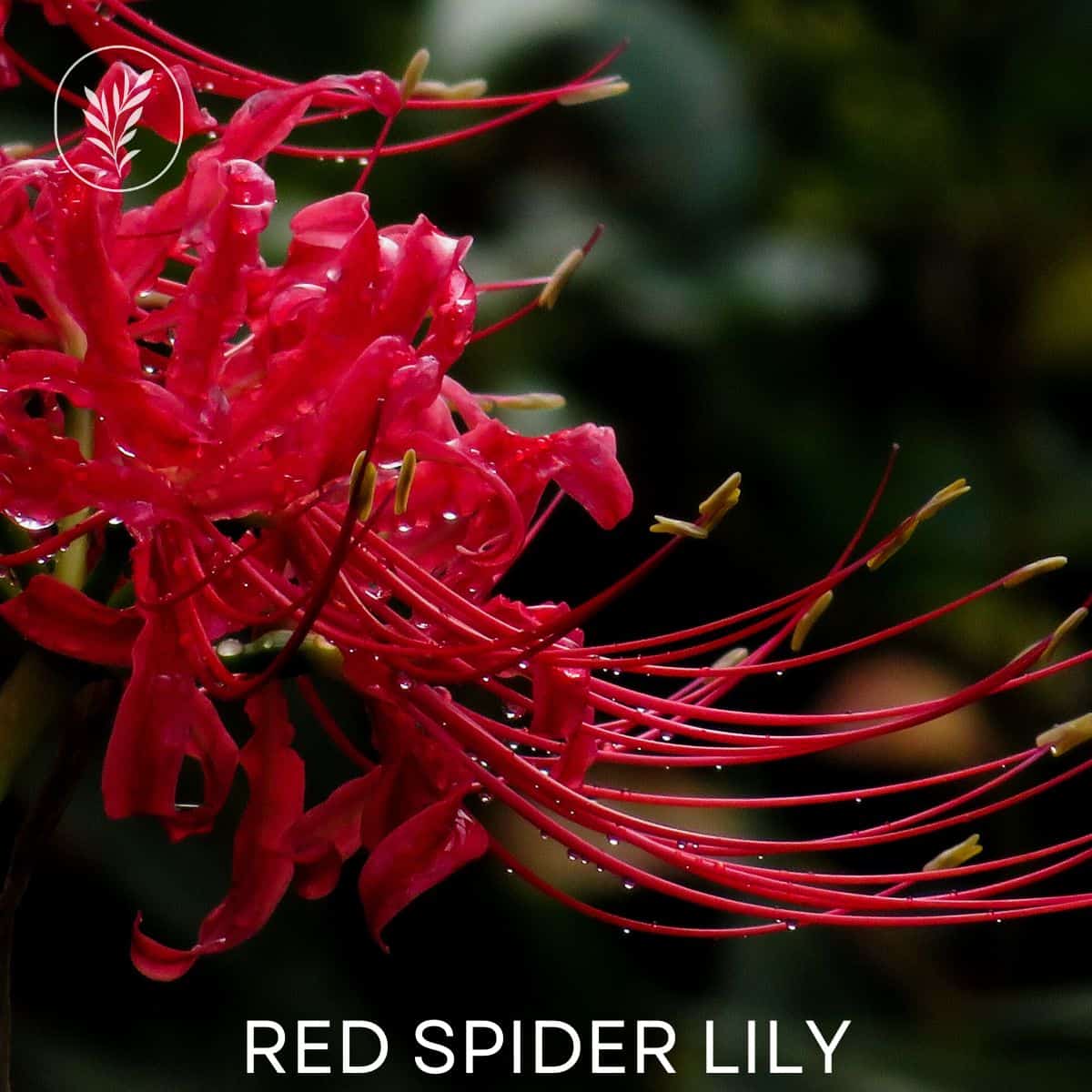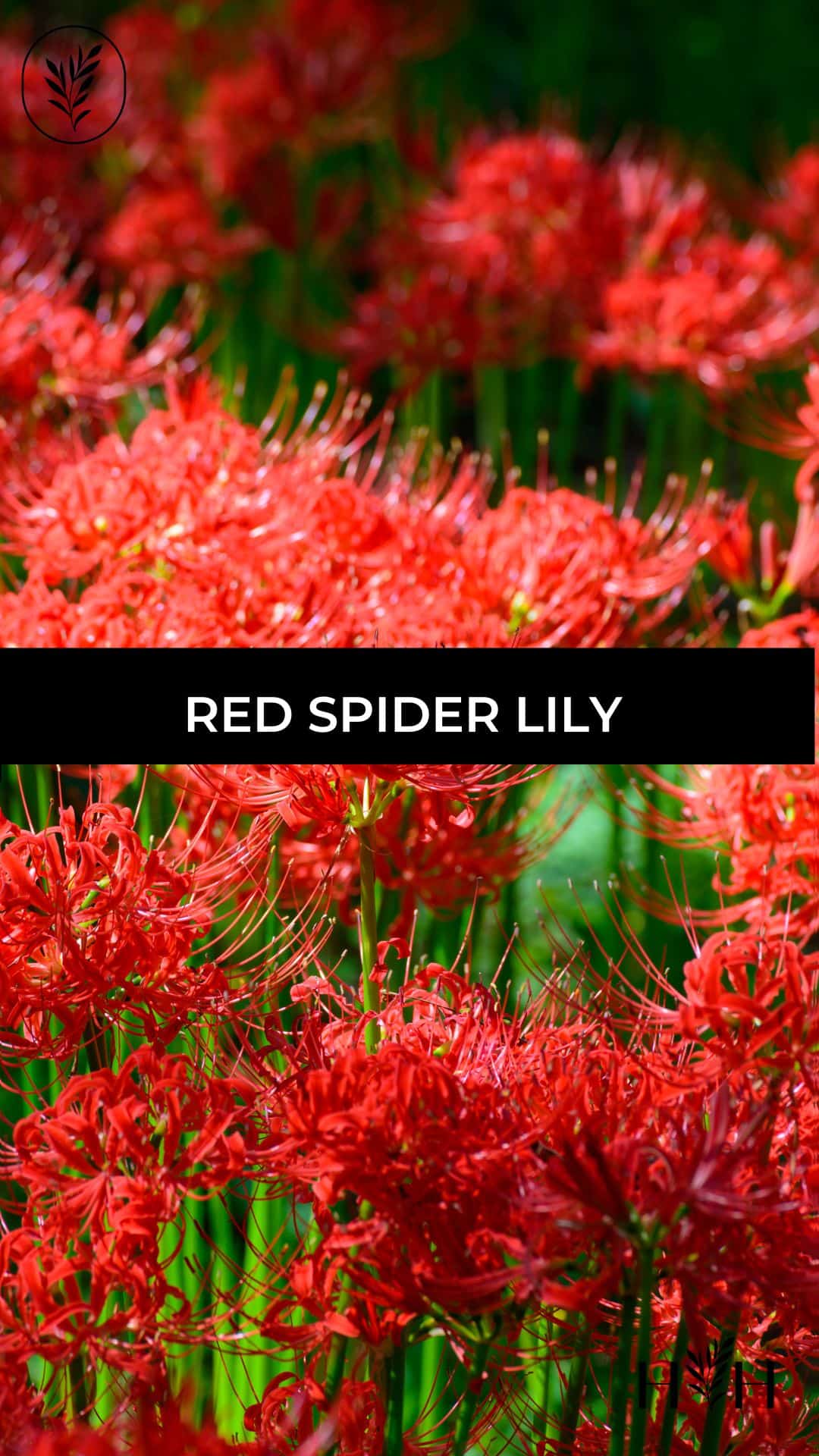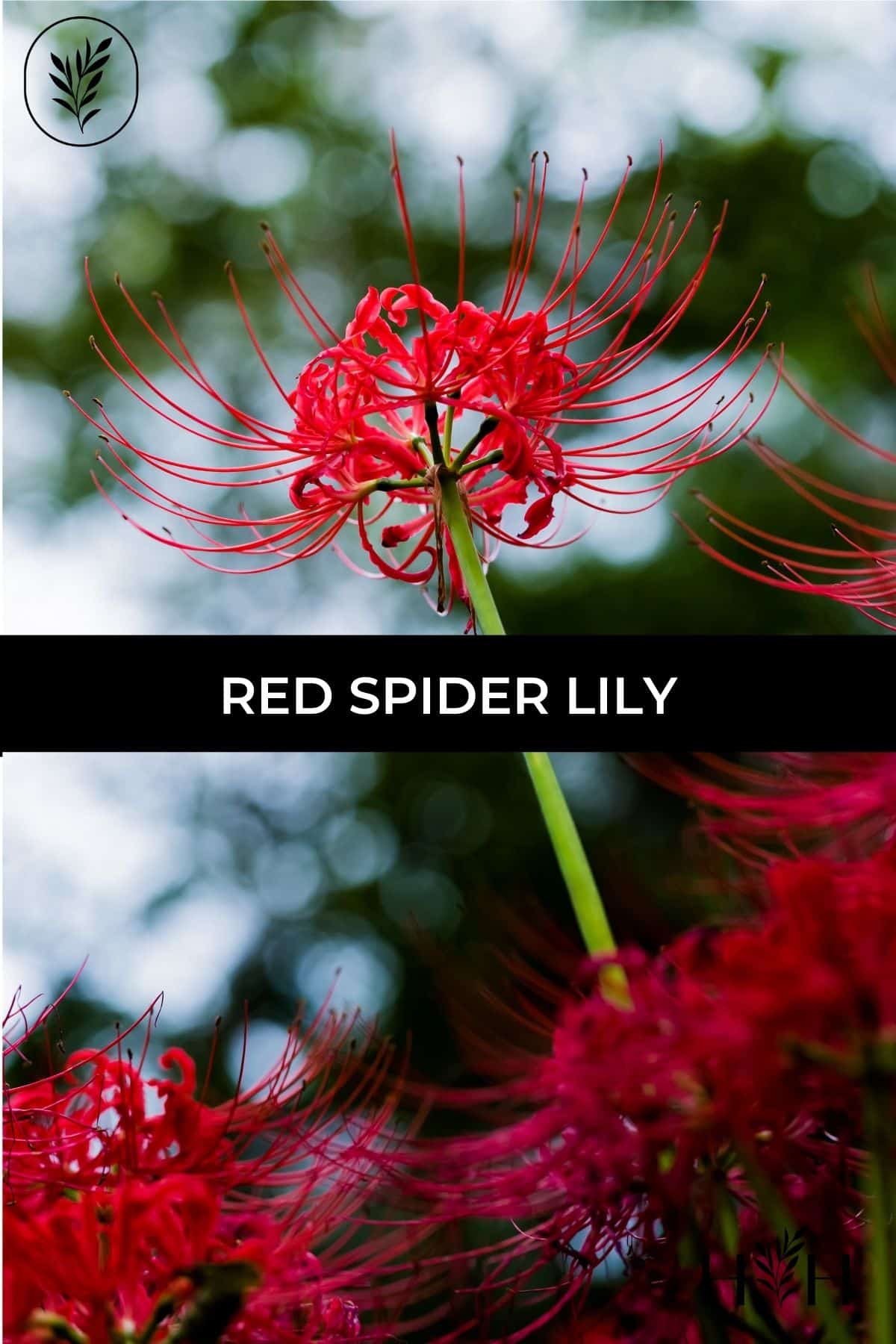The red spider lily is an exotic flower that can be grown in many temperate climates. With just a few simple steps, you can easily cultivate these beautiful blooms right at home.
Red spider lily (Lycoris radiata) is a perennial flowering plant known for its unique showy red umbel-shaped flowers with long skinny stamens. Native to Japan and Nepal, this flowering bulb is also called the Hurricane lily. The plants are unique in that they bloom in late summer, develop their foliage in the fall, and keep their foliage through winter before entering a summer dormancy.
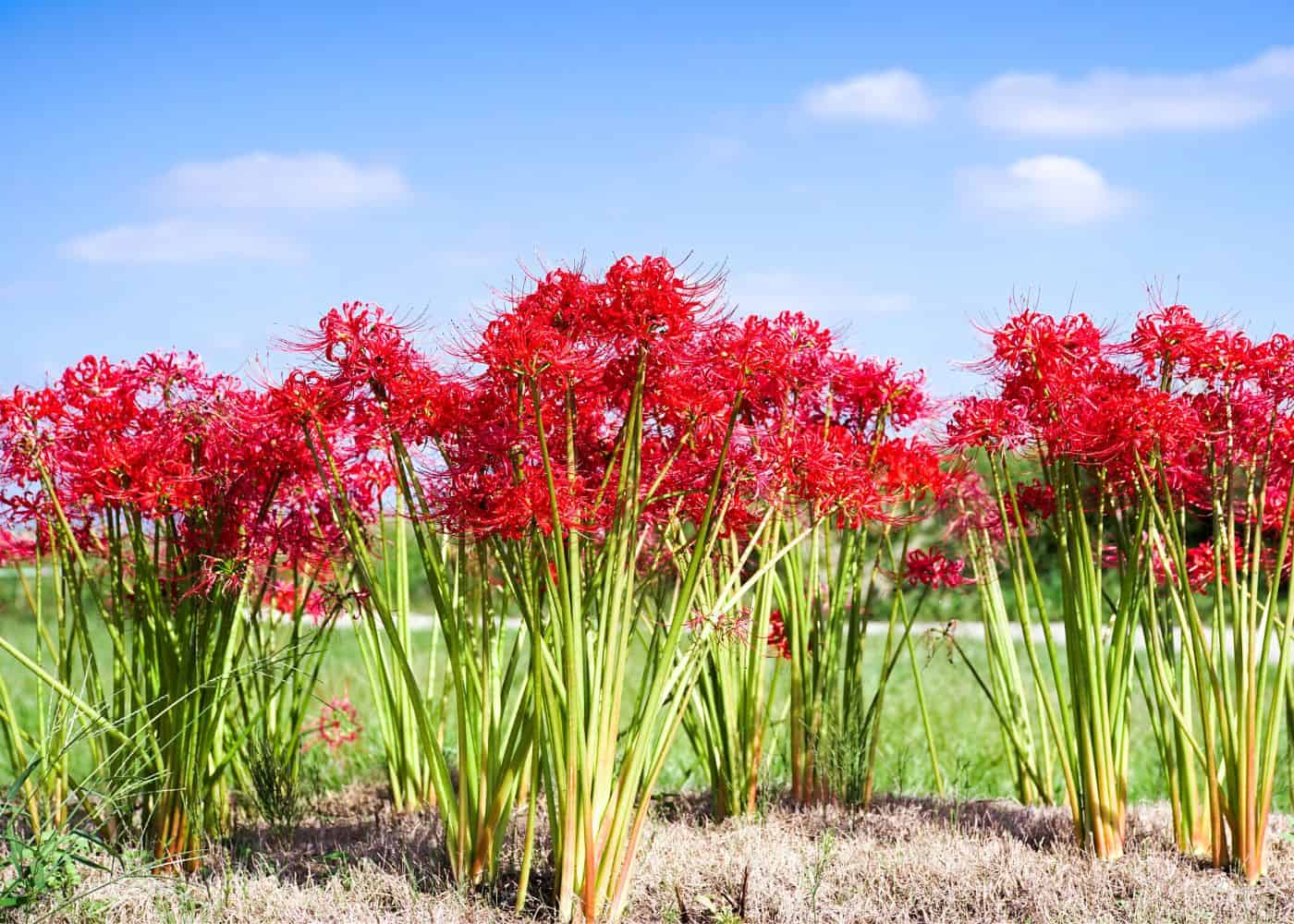
Introduction to the red spider lily
The red spider lily (Lycoris radiata) is a stunning perennial flower native to East Asia. It has been cultivated for centuries in Japan, China, and Korea. The plant grows from bulbs that produce large clusters of unique spider-like bright red flowers. The foliage is long and thin, giving the plant an elegant appearance.
Red spider lilies belong to the Amaryllidaceae family and are not considered true lilies in a botanical sense. That said, they have many growing preference similarities to true lilies.
Red spider lilies thrive in full sun or partial shade and prefer moist soil conditions but can tolerate dryness as well. They are also tolerant of heat, humidity, drought, and surprisingly cold temperatures down to about -0°F (-18°C). When planted correctly, they will bloom every year in late summer or early fall with beautiful blooms that last up to two weeks.
Lilies should be planted in areas where they will receive at least 6 hours of direct sunlight per day during their growing season—typically late spring through early summer—and plenty of water throughout the season until they go dormant after flowering. They do best when planted in beds or borders near other perennials for additional color interest during their off-season months.
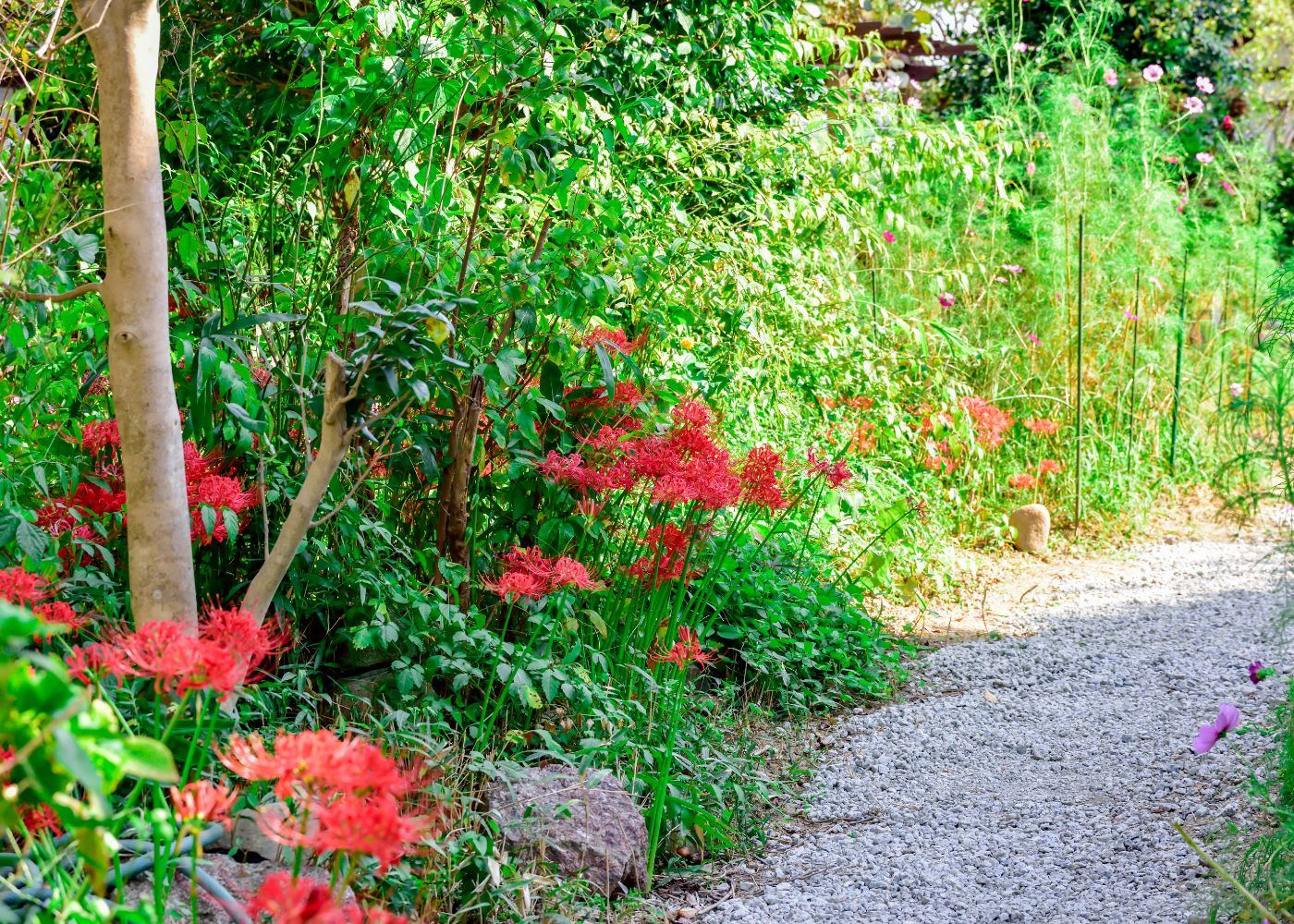
Planting red spider lily bulbs is easy, as with most types of lilies. The bulbs are usually available in early summer when they are dormant. Simply dig a hole about 8 inches deep into your garden bed, then place one bulb into it, cover it back up with soil, and gently pat it down around the bulb’s base so that no air pockets remain beneath its surface. Water thoroughly after planting, then continue watering regularly throughout its growing season until dormancy sets in after flowering has occurred.
Once established, red spider lily plants require minimal care; however, there are some steps you can take to ensure healthy growth each year. These include fertilizing once a month during active growth periods using an all-purpose fertilizer formulated for flowering plants like this one; deadheading spent blooms; removing any yellowed leaves as needed; cutting back foliage in the early summer once it begins dying off naturally; mulching heavily over winter months in cooler areas (Zones 6-7); dividing clumps every 3–4 years if desired and providing supplemental irrigation during extended periods of drought if necessary.
Propagating red spider lilies is simple. Just wait until new shoots appear on existing plants, then carefully dig them out along with surrounding soil before replanting them elsewhere, either directly into your garden bed or into containers filled with potting mix instead, depending on your preference at the time.
There are many benefits associated with growing these unique flowers, including adding vibrant color to gardens both indoors and outdoors while attracting beneficial pollinators like butterflies and hummingbirds due to their sweet nectar production. Additionally, they can deter deer and rabbits away from prized landscapes since they dislike consuming these particular species, making them ideal additions overall.
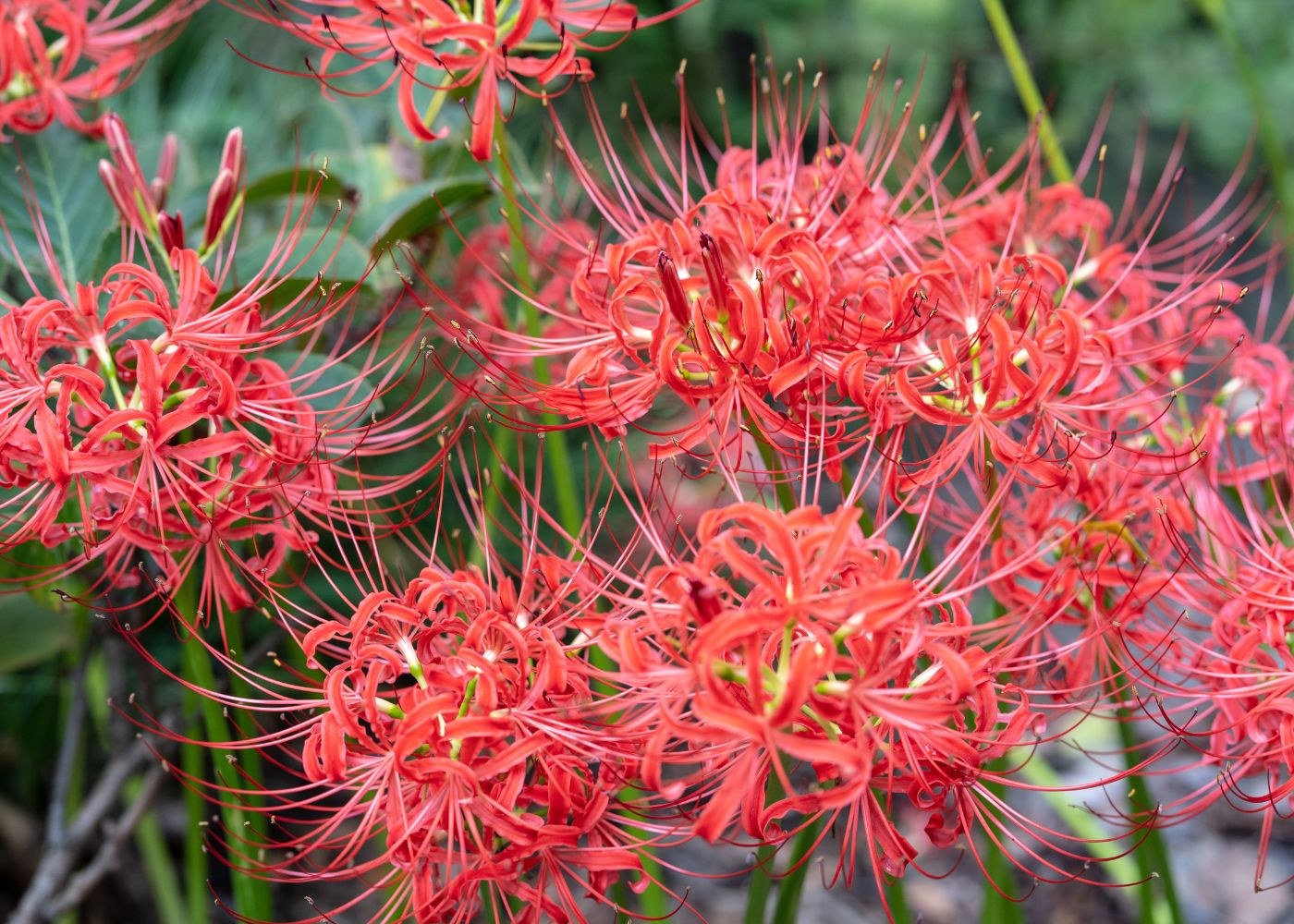
Where to plant red spider lily
Red spider lilies prefer full sun but are tolerant of partial shade and are best planted in areas of the garden that receive at least 6 hours of direct sunlight per day. Red spider lilies can typically be grown in USDA Zones 6-10 but usually require winter protection (like thick mulch) in Zones 6-7.
The soil should be well-draining and slightly acidic with a pH between 5.5 and 7.0; adding compost or peat moss will help achieve this balance if needed. Red spider lilies also require regular watering, especially during dry spells; water them deeply once every week or two during hot summer months, allowing the top few inches of soil to dry out before each watering session.
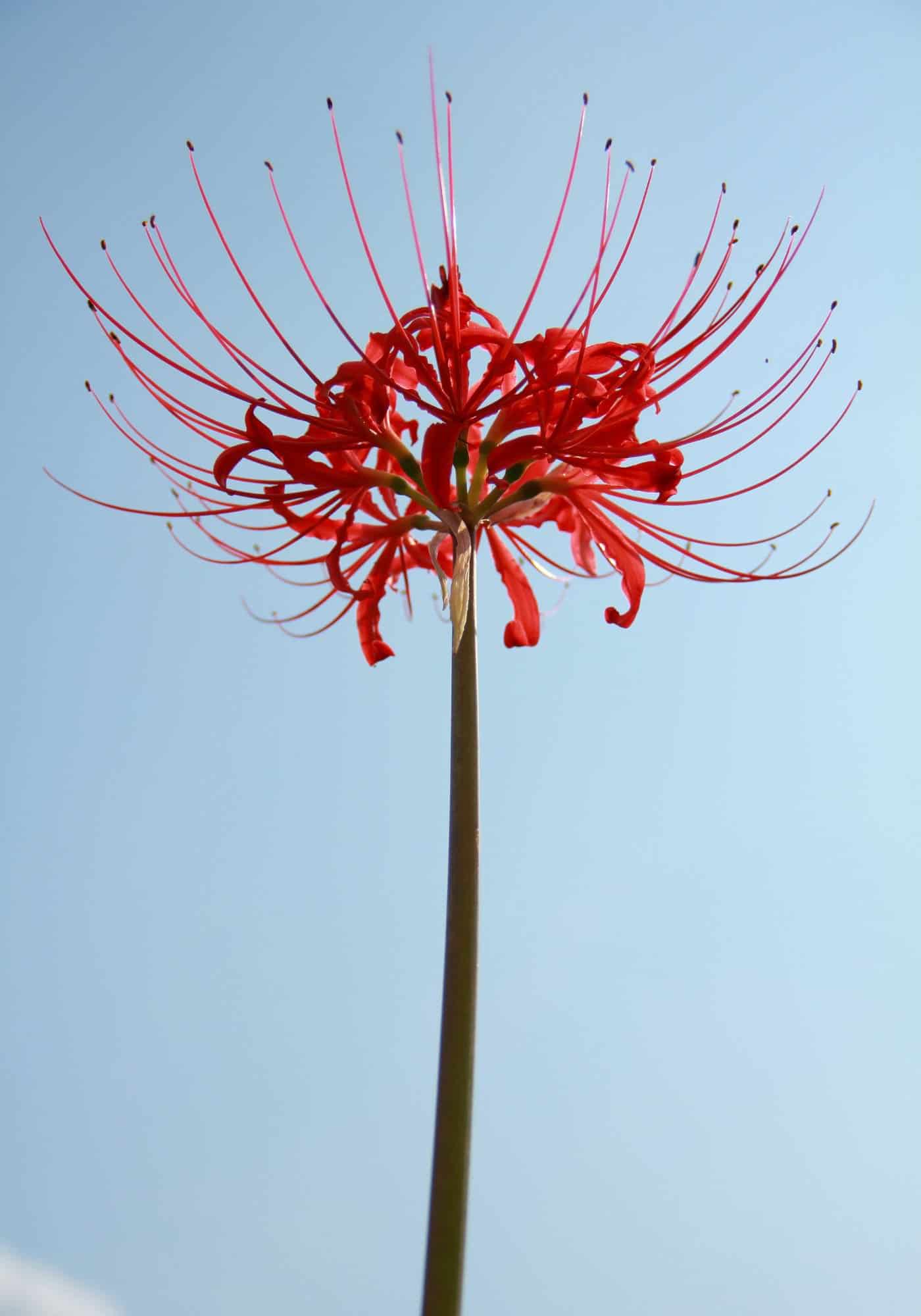
How to plant red spider lily
Planting red spider lilies is easy and doesn’t require any special gardening skills or knowledge. The plants prefer full sun or partial shade and should be planted in soil with good drainage. It’s best to plant them in areas where they won’t get too much water, such as on slopes or raised beds. Avoid planting them right under trees or shrubs since the roots of these plants may compete for nutrients with the red spider lily’s roots (not to mention that the leaves will compete for sunlight).
The best time to plant red spider lilies is in the summer when temperatures are still warm. Start by digging a hole twice as wide as the bulb and about three times deeper than its height; this will give it plenty of room for growth over time. This usually means digging about an eight-inch deep hole.
Place the bulb into the hole pointy side up, then fill it back up with soil until it’s level with the ground surface around it. Water thoroughly after planting and keep moist until new growth appears—usually within two weeks.
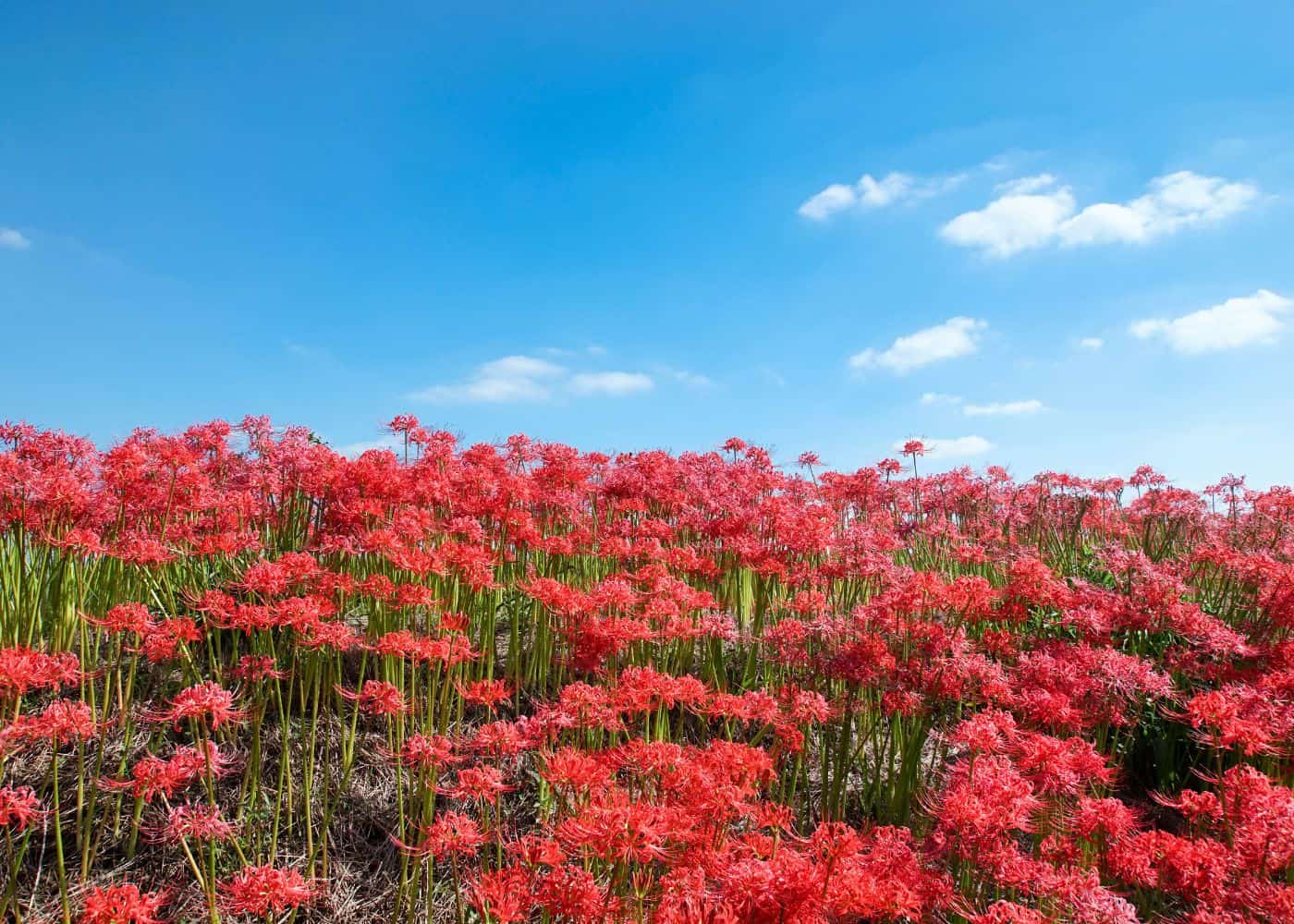
Plant care for red spider lilies
Red spider lily plants are relatively low maintenance in the garden. They tend to become stronger each year when planted in an acceptable environment.
Red spider lily plants send up a flower scape in late summer and bloom with gorgeous red umbels in late summer and early fall. Then the plant develops its foliage at the base, which persists through winter and into the spring. The foliage then generally dies back in early summer as days get long and temperatures get hot.
Fertilizing
Fertilizing your red spider lily is essential for healthy growth and blooms. The best time to fertilize is in the spring when new growth begins. Use a balanced fertilizer and apply it according to package directions during the growing season. If you’re using granular fertilizer, spread it evenly around the base of the plant but avoid getting any on its leaves or flowers.
Pruning
Red spider lilies require minimal pruning. Leave the foliage standing through winter after the plant blooms. You can either deadhead the spent flowers by trimming them off or let the plant grow seeds. Cut back the plant to the ground after the leaves die back naturally in early summer.
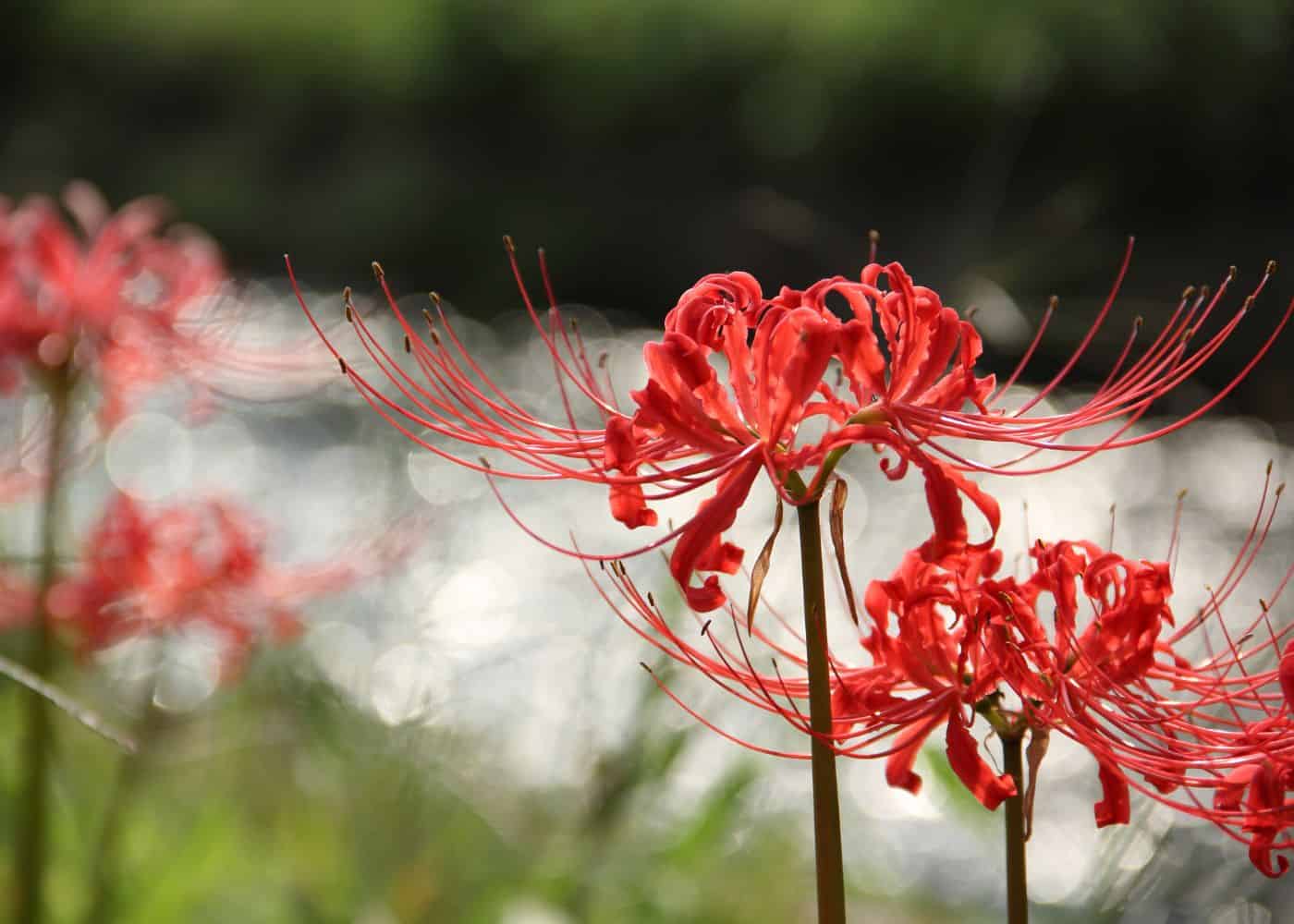
Propagation
Propagating red spider lilies is a relatively easy process that can be done either from seeds or by division. Propagation by division is easiest and is much more common.
For propagation from bulbs, dig up the bulb in early summer and separate any offsets that have formed at its base. Replant these offset bulbs as soon as possible, with each offset being planted at least four inches away from each other and placed around one inch below the surface of the soil. Water regularly until new growth appears, then reduce watering frequency once plants are established.
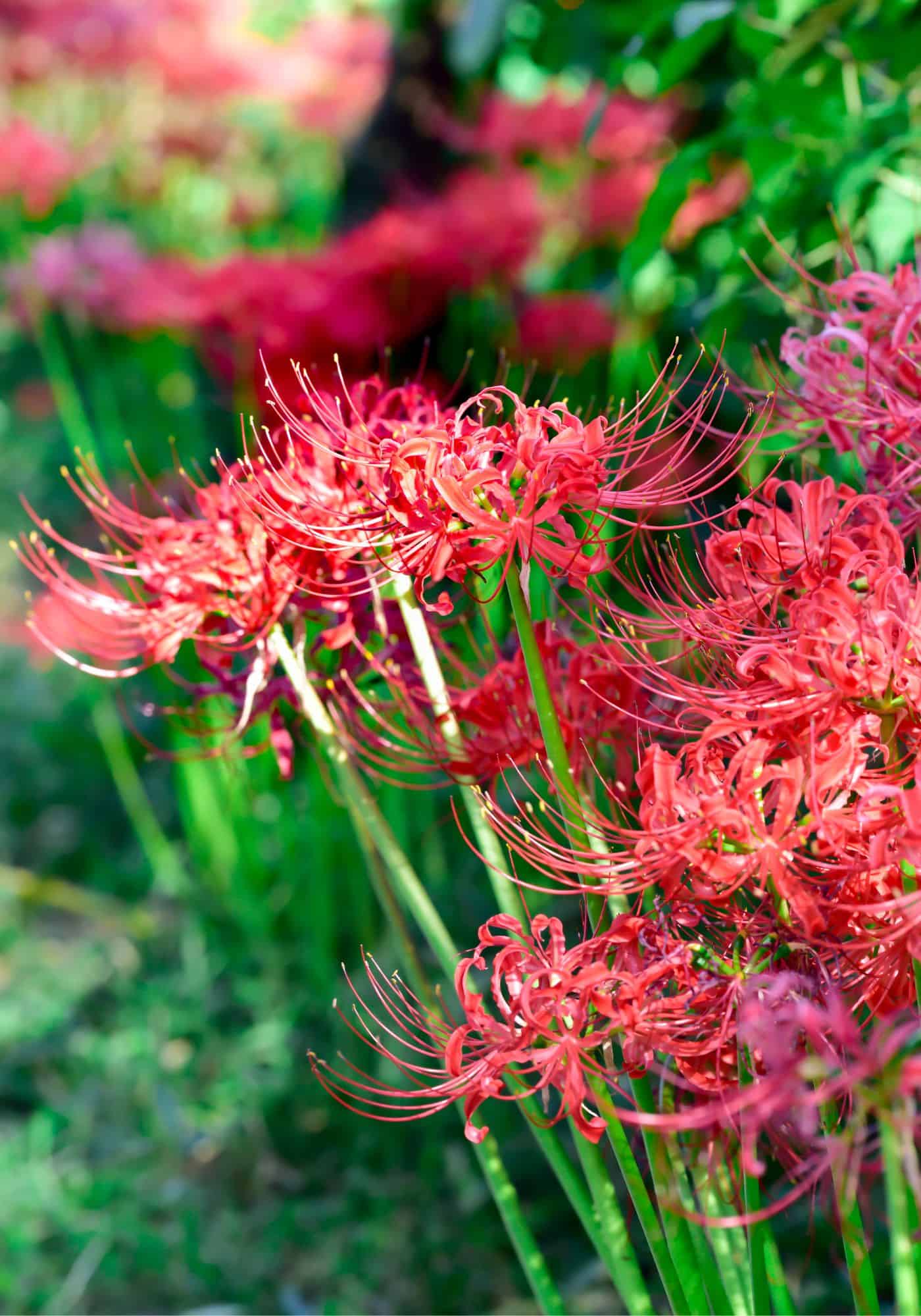
FAQs about red spider lily plants
Are red spider lily plants toxic?
Red spider lily plants and flowers are highly toxic and can cause skin irritation or poisoning if ingested. The sap of the plant contains calcium oxalate crystals which can cause an intense burning sensation on contact with skin, eyes, or mouth. Ingestion of any part of the plant can lead to nausea, vomiting, abdominal pain, and difficulty breathing. It is best to admire these beautiful blooms from afar rather than risk coming into contact with them.
What do red spider lilies represent?
Red spider lilies represent several different things. They are a symbol of summer and the passing of time. They represent renewal, rebirth, and hope for the future. In Japan, they are often associated with farewells as they bloom in late summer when school is ending and people part ways. Red spider lilies also signify death and mortality because their short blooming period reminds us that life is fleeting. The flowers can be seen as a reminder to make the most out of our lives while we still have them.
Why is the red spider lily the flower of death?
The red spider lily is a flower with deep cultural and spiritual significance in Japan, where it is known as the “flower of death”. It has been associated with death for centuries due to its tendency to bloom near gravesites and temples dedicated to the dead. The flower symbolizes the impermanence of life, as well as mourning and remembrance of those who have passed away. In some cases, it can also be seen as a reminder that life should be cherished while we still have it.
Before you go…
Growing red spider lilies is a great way to add color and beauty to your garden. They are easy to care for, require minimal maintenance, and can be propagated easily. Red spider lilies will bring a unique charm to any outdoor space and will provide you with beautiful blooms each year. With proper planting, care, and propagation techniques, you can enjoy the vibrant colors of the red spider lily in your own backyard!


